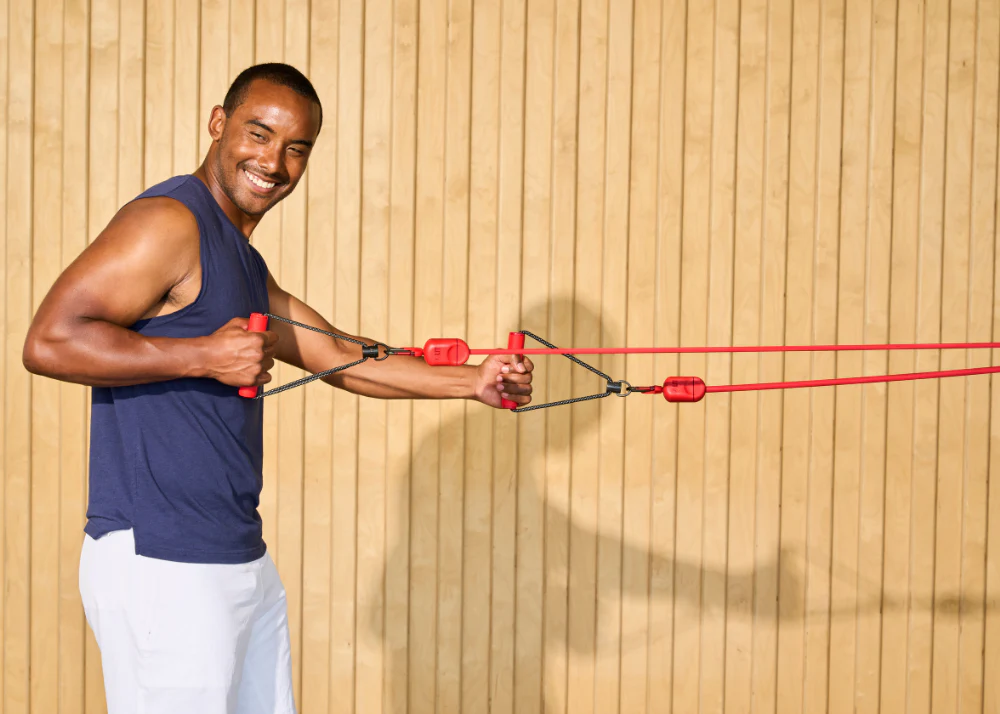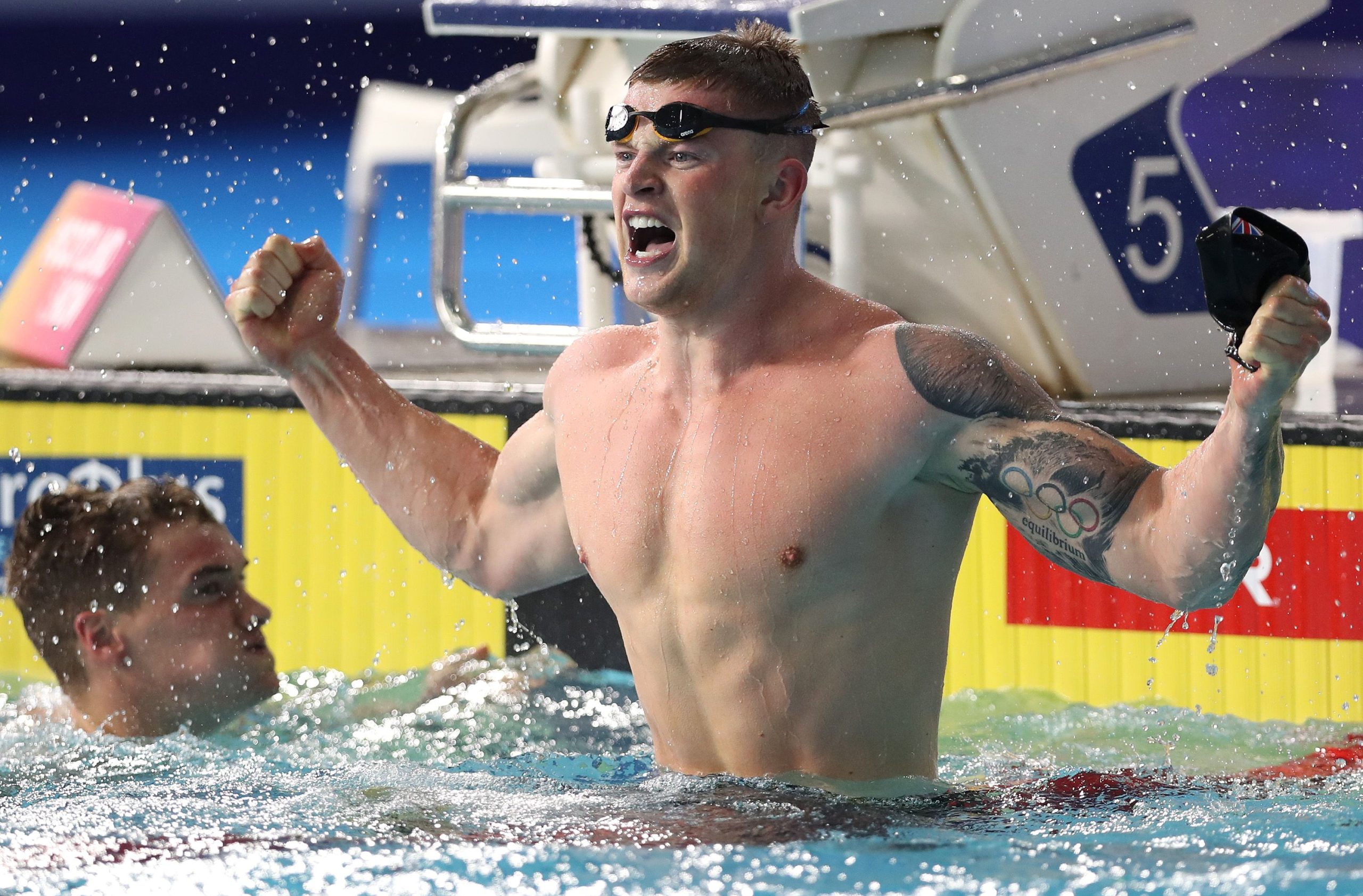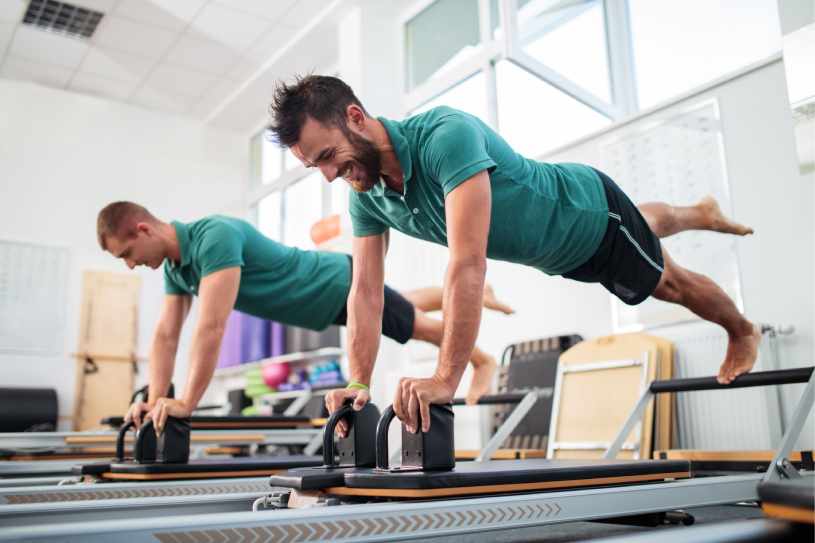Table of Contents
The Desire to Build Muscles Without Going to the Gym
The allure of building muscles without the confines of a gym setting has gained considerable attention. For some, the gym may pose challenges such as time constraints, financial considerations, or a simple preference for exercising in a different environment. The quest for alternative methods has prompted individuals to explore unconventional yet promising avenues for muscle development.
Comparison Between Gym Workouts
While gyms have long been synonymous with muscle building, the emergence of alternative exercises like Pilates and swimming raises questions about the comparative effectiveness of these approaches. This exploration extends beyond the conventional boundaries of weightlifting and resistance training, inviting individuals to consider a broader spectrum of fitness activities.
Alternative Approaches for Muscle Building
Understanding the importance of alternative approaches involves recognizing fitness enthusiasts’ diverse needs and preferences. Some individuals may find traditional gym workouts intimidating or monotonous, leading them to seek alternative activities that align with their interests and lifestyle choices. The discussion surrounding Pilates and swimming as potential muscle builders sheds light on the significance of diversifying workout routines to cater to a broader audience.
Traditional Muscle Building in the Gym
For decades, the gym has been the epicenter of muscle-building endeavors, offering a plethora of tools and equipment designed to sculpt and strengthen the human physique. Let’s delve into the cornerstone of conventional muscle building and explore the pros and cons associated with gym-based workouts.
Conventional Gym Workouts
Gym workouts are synonymous with lifting weights, utilizing resistance machines, and engaging in targeted exercises to isolate and develop specific muscle groups. The environment is structured, providing access to a variety of equipment to accommodate different fitness levels and objectives. From free weights to cardio machines, gyms offer a comprehensive array of tools to facilitate muscle growth.
Pros and Cons of Gym-Based Muscle Building
Pros:
- Equipment Variety: Gyms provide a wide range of equipment, allowing individuals to target specific muscle groups precisely.
- Community and Support: The communal atmosphere fosters motivation and support, with trainers and fellow gym-goers offering guidance and encouragement.
- Structured Environment: The organized setting of a gym helps individuals follow a systematic workout routine, aiding in consistency.
Cons:
- Time and Location Constraints: Gym sessions often require dedicated time, and accessibility may be an issue for those with busy schedules or limited gym options in their vicinity.
- Cost Considerations: Memberships, personal trainers, and commuting expenses contribute to the financial aspect, making gym workouts less feasible for some individuals.
- Intimidation Factor: The gym environment can be intimidating for beginners, potentially hindering their motivation and comfort levels.

Common Exercises and Routines for Muscle Growth
Certain exercises and routines have become staples in the gym-goer’s repertoire in the quest for muscle building. These include:
- Compound Exercises: Squats, deadlifts, and bench presses engage multiple muscle groups simultaneously, promoting overall strength and growth.
- Isolation Exercises: Bicep curls, tricep extensions, and leg curls target specific muscle groups, allowing for focused development.
- Progressive Overload: Gradually increasing weights and resistance over time is a fundamental principle in gym-based muscle building, challenging the muscles to adapt and grow.
As we assess the traditional gym setting for muscle building, we’ll juxtapose these methods with the alternative approaches of swimming and Pilates, investigating their efficacy in achieving muscle-building goals. Join us as we unravel the nuanced world of fitness, exploring diverse avenues to sculpt the body and build strength.
The Pilates Perspective: Does Pilates Build Muscle?
Pilates, with its roots in the early 20th century, has gained widespread popularity as a holistic approach to physical fitness. Often touted for its emphasis on core strength, flexibility, and overall body awareness, Pilates poses an intriguing question in the realm of muscle building. Let’s unravel the Pilates perspective and explore its potential as a muscle builder.
Pilates as a Low-Impact Exercise
Pilates distinguishes itself by offering a low-impact alternative to traditional high-intensity workouts. Developed by Joseph Pilates, this exercise method focuses on controlled movements, breath awareness, and a mind-body connection. The low-impact nature of Pilates makes it accessible to individuals of varying fitness levels, providing a gentler option for those seeking muscle engagement without the strain associated with more rigorous exercises.
Understanding the Principles of Pilates for Muscle Engagement
Central to Pilates is its commitment to building strength from the inside out. The method emphasizes core stability, postural alignment, and controlled movements. By targeting the body’s deep stabilizing muscles, Pilates aims to create a foundation for strength that extends to the extremities. The emphasis on precision and control fosters muscle engagement throughout the entire range of motion.
Examining the Potential of Pilates for Muscle Building
While Pilates may not involve heavy weights or resistance machines, its potential as a muscle builder lies in the method’s ability to promote lean muscle mass, flexibility, and overall functional strength. The incorporation of various Pilates equipment, such as reformers and resistance bands, adds an element of resistance to exercises, challenging muscles in unique ways.
Comparing Pilates with Traditional Gym Workouts in Terms of Muscle Development
When evaluating Pilates as a muscle-building modality, it’s crucial to compare it with traditional gym workouts. While gyms typically focus on external resistance through weights, Pilates places emphasis on internal resistance and body weight. The comparison includes considerations such as:
- Type of Resistance: Pilates utilizes controlled body movements and specialized equipment for resistance, while traditional gym workouts rely on external weights and machines.
- Muscle Engagement: Both methods target muscle engagement, but Pilates emphasizes overall body awareness and core strength, while traditional workouts often isolate specific muscle groups.
- Impact on Joints: Pilates, being low-impact, is gentler on joints compared to some high-intensity gym exercises.

Breaking Myths: Can Pilates Build Muscle and Do Swimming Build Muscle?
In the ever-evolving landscape of fitness, myths and misconceptions often cloud the perception of alternative approaches like Pilates and swimming as viable muscle-building methods. Let’s dispel the fog, addressing common myths and exploring the evidence behind the effectiveness of Pilates and swimming in the pursuit of becoming a muscle builder without the traditional gym setting.
Addressing Common Misconceptions About Pilates and Swimming
Myth 1: Pilates is only for flexibility, not muscle building.
Addressing this misconception involves highlighting Pilates’ multi-faceted approach. While flexibility is a notable benefit, Pilates simultaneously engages muscles throughout the body, contributing to strength and endurance.
Myth 2: Swimming primarily enhances cardiovascular fitness, not muscle development.
Swimming’s muscle-building potential is often underestimated. We’ll explore how the resistance provided by water, combined with various strokes and movements, actively engages muscle groups, fostering strength and toning.
Debunking Myths Surrounding Muscle Building Without Gym Equipment
Myth 3: Effective muscle building requires traditional gym equipment.
This myth implies that without weights and machines, muscle development is limited. We’ll challenge this notion by showcasing how Pilates and swimming, though divergent in nature, provide unique resistance and engagement for muscle growth.
Myth 4: Non-gym workouts lack intensity for substantial muscle gains.
By examining the principles of intensity in Pilates and the resistance inherent in swimming, we’ll debunk the belief that intensity is exclusive to traditional gym workouts.
Providing Evidence and Studies Supporting the Effectiveness of Pilates and Swimming
Numerous studies support the muscle-building potential of Pilates and swimming:
- Pilates Studies: Research has shown that Pilates can improve muscle strength, particularly in the core, with positive outcomes for overall muscle tone and endurance.
- Swimming Studies: Studies have explored the impact of swimming on muscle development, emphasizing its effectiveness in enhancing strength, cardiovascular fitness, and flexibility.
Factors to Consider in Muscle Building Without the Gym
Embarking on the journey of muscle building outside the traditional gym setting requires thoughtful consideration and a nuanced approach. As we conclude our exploration of alternative methods like Pilates and swimming, let’s delve into key factors that individuals should consider when becoming a muscle builder without the familiar hum of gym machinery.
Considerations for Individuals Opting for Alternative Muscle-Building Methods
- Personal Fitness Goals: Clearly define your muscle-building objectives. Whether it’s sculpting lean muscles, improving overall strength, or enhancing endurance, understanding your goals will guide your choice of workouts.
- Fitness Level: Tailor your approach to your current fitness level. Pilates and swimming offer modifications and progressions to accommodate beginners and advanced practitioners.
- Time Commitment: Assess the time you can realistically dedicate to your workout routine. Alternative methods often offer flexibility in scheduling, making them suitable for those with busy lifestyles.
Importance of Proper Nutrition and Recovery in Non-Gym Muscle Development
- Nutritional Support: A well-balanced diet is crucial for muscle building. Ensure an adequate intake of protein, carbohydrates, and healthy fats to support muscle growth and recovery.
- Hydration: Especially important for swimmers, staying well-hydrated supports optimal muscle function. Pilates practitioners also benefit from hydration to aid in overall health and recovery.
- Recovery Strategies: Both Pilates and swimming can place demands on the body. Incorporate proper recovery strategies, including rest days, adequate sleep, and stretching or foam rolling techniques.
Tailoring Workouts to Personal Goals and Preferences
- Pilates Customization: Pilates allows for flexibility in exercise selection and intensity. Tailor your Pilates routine to focus on specific muscle groups or overall body conditioning based on your preferences.
- Swimming Variations: Swimming offers a variety of strokes and techniques. Customize your swim sessions to target different muscle groups and address specific fitness goals, whether it’s endurance or muscle toning.
- Diversity in Training: Combining Pilates and swimming or incorporating other activities adds diversity to your routine. This not only prevents monotony but also engages different muscles for comprehensive development.
As you navigate the realm of alternative muscle-building methods, remember that individual preferences, goals, and considerations play pivotal roles in determining the most suitable approach. By embracing diversity and tailoring your fitness journey to align with personal factors, you can carve a path toward becoming a muscle builder that resonates with your unique lifestyle and aspirations.
Conclusion
In the pursuit of becoming a muscle builder, the exploration of alternative methods outside the traditional gym landscape has revealed a rich tapestry of possibilities. The spotlight on Pilates and swimming has prompted an insightful comparison, challenging preconceived notions and embracing the diversity that defines fitness.











One Response